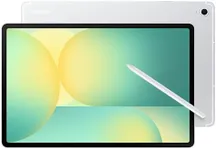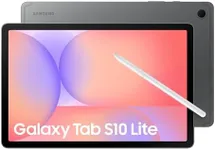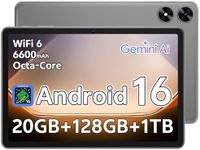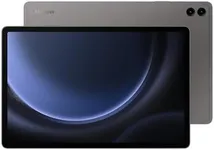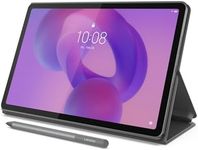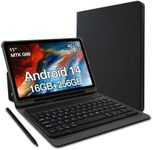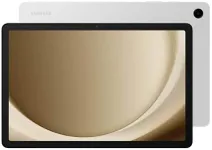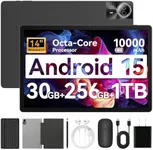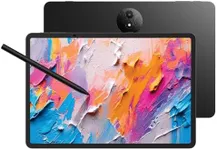Buying Guide for the Best Android Tablets
Shopping for an Android tablet can be exciting, but it's easy to get overwhelmed with all the choices. To find the best fit, first decide how you'll mostly use your tablet—will it be for reading, streaming videos, productivity, gaming, or a mix? Understanding your main use helps you focus on what features really matter for you. Also, consider things like portability, battery life, and how much storage you might need for your apps and media. By breaking down the main specifications and how they relate to your needs, you can make a confident, informed decision.Display Size and ResolutionThe display size tells you how big the screen is, usually measured diagonally in inches, while resolution refers to how sharp and clear the screen looks, usually described in pixels like 1920x1200. Bigger screens are great for watching movies, reading, or drawing, but make the tablet heavier and less portable. Smaller screens are easier to hold and carry, perfect for quick browsing or reading. Higher resolutions mean crisper text and images, which is important if you care about picture quality for movies, reading, or artwork. Choose a larger, high-res screen if you plan to watch, read, or create a lot on your tablet; opt for something smaller and lower-res for travel or if you mostly use basic apps.
Processor (CPU)The processor is the 'brain' of your tablet and affects how quickly and smoothly your tablet runs. Faster processors (with more cores and higher speeds, listed in GHz) handle games, multitasking, and demanding apps better, but may use more power. If you mainly browse the web, stream videos, or read, a basic processor is enough; if you like gaming, creative apps, or heavy multitasking, pick a tablet with a more powerful processor for a smoother experience.
RAMRAM is the tablet’s memory used for running apps and multitasking—more RAM helps your tablet switch between apps smoothly and handle lots of open windows. Tablets usually have anywhere from 2GB to 12GB of RAM. For web browsing, email, and streaming, 3-4GB RAM is usually enough. If you run many apps at once or play modern games, go for 6GB or more. Picking more RAM ensures your tablet feels faster as your needs and app requirements grow.
StorageStorage tells you how much space you have for apps, photos, videos, and files. Typical tablets offer anywhere from 32GB to 256GB and sometimes more. If you mostly use cloud services or just need essential apps, lower storage is fine. If you like downloading lots of media or using heavy apps, go for 64GB or higher. Some tablets let you add microSD cards, which is great if you expect to store more later.
Battery LifeBattery life is how long your tablet will last between charges, usually measured in hours of typical use. More battery life means you can use your tablet all day without hunting for an outlet. Real battery needs depend on your habits: for travel or long commutes, longer battery life (10 hours or more) is useful; if you'll mostly use it at home near a charger, this may not matter as much.
Operating System Version and UpdatesAndroid tablets run different versions of the Android system, and updates can bring new features and better security. Newer versions offer better compatibility with new apps and features, while regular updates keep your device secure. Choose a tablet that launches with a recent version of Android and a track record of getting updates if you want to use your device for several years.
Connectivity OptionsConnectivity refers to what other devices or networks your tablet can connect to, like Wi-Fi, Bluetooth, cellular (4G/5G), and USB ports. Most people are fine with Wi-Fi only, but if you want internet on the go, look for models with cellular connectivity. Features like Bluetooth help connect headphones or keyboards, while USB and microSD ports add flexibility. Think about how and where you’ll use your tablet to decide which connections you really need.
Build Quality and WeightBuild quality is about how sturdy and comfortable the tablet feels, which includes the material (plastic, metal, or glass), weight, and how slim it is. Lighter tablets are easier to hold for long periods, especially for reading or kids, while more robust builds might withstand drops better. Consider who will use the tablet and whether you need something rugged or slim and stylish.
Camera QualityMost tablets include front and rear cameras for photos, video calls, and document scanning. Camera quality is usually described in megapixels (MP) and features like autofocus or flash. If you plan to use your tablet for video calls or light photography, middle-range cameras are enough. For frequent photo taking or video creation, look for higher megapixels and better camera features.


